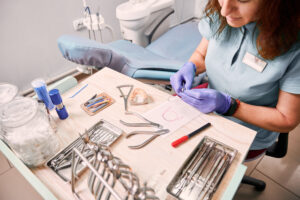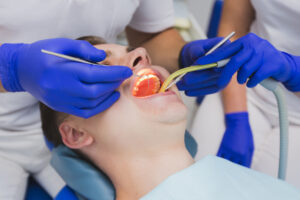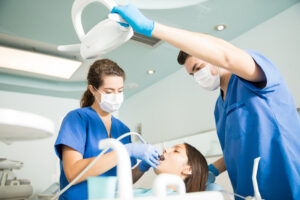Dental Staff Onboarding Process That Works
A seamless transition to a new role can establish a foundation for long-term employee success. This is why having a clear and structured onboard dental employee onboarding tips and system in place is essential for any dental practice seeking to develop an effective and motivated team. It does not matter if you are onboarding a dental assistant, hygienist, front desk coordinator, or associate dentist; a strong onboarding plan builds comfort, skills, and commitment from the very beginning.
In this blog, we will review some of the most important elements of an ideal onboarding process for dental staff, how to best welcome new hires, and how you can use a checklist to ensure you cover all aspects of the onboarding process.
Why Onboarding Matters in Dental Practices
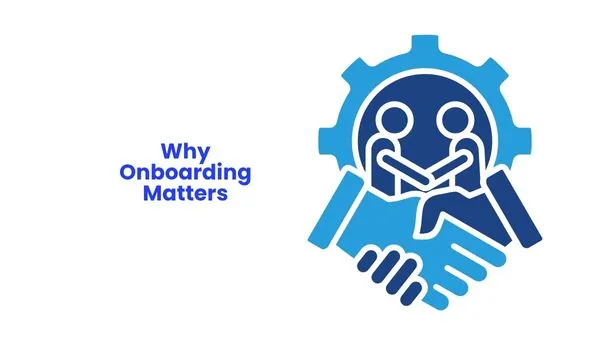
Many dental practices are busy and fast-paced employers. New hires without proper onboarding or training can feel overwhelmed, ill-equipped, and lost. This can ultimately lead to burnout or turnover sooner in their careers, miserably wasting valuable time and money in a practice’s efforts to hire.
An efficient new hire process for a dental practice can provide:
Higher retention of employees.
Higher quality of care for patients.
Faster ramp-up for workers to be productive.
Building strong teamwork.
Step-by-Step Onboarding Process for Dental Staff
The step-by-step onboarding process for dental staff ensures a smooth transition into the practice, enhancing confidence and productivity. It covers orientation, training, compliance checks, and integration into the team.
1. Pre-boarding begins before day one: Have everything in place before the employee arrives.
Configure their email, logins, and attire.
Organize paperwork and training documents.
Notify the current team of the new employee’s arrival.
Include this on your dental office onboarding list to ensure day one runs smoothly.
2. Welcome orientation: The day of introduction sets the tone. Make it welcoming, structured, and informative:
Welcome them to the team and take them on a tour of the office.
Explain the practice’s vision, values, and mission.
Go over roles and expectations
Don’t give them procedures first off; begin with establishing comfort and rapport.
3. Shadowing & role-specific training: Adapt training to their role:
For clinical staff: Have them shadow a senior hygienist or assistant.
For front office staff: Take them through the scheduling system, insurance procedures, and patient communication scripts.
A definite, organized direction is key when determining how to effectively train new dental staff.
4. Use a dental office onboarding checklist: In order not to miss crucial steps, make a standard dental office onboarding checklist. This should incorporate:
Filling out HR forms.
Reviewing infection control procedures.
Training on systems (scheduling, billing, charting).
Emergency response and OSHA regulation.
Training on handling patient encounters.
Checklists ensure consistency regardless of who’s in charge of onboarding.
5. Assign a mentor: Provide the new employee with someone they can turn to with questions. A mentor provides:
Real-time support during transition.
Insight into team dynamics.
Guidance and encouragement.
Mentorship builds confidence in new hires and creates a sense of belonging.
6. Weekly check-ins for the first 90 Days: The onboarding process does not need to end after the first week. Plan for frequent check-ins to:
Answer questions.
Clarify tasks or policies.
Get feedback on their experience.
Fix early concerns before they evolve into bigger problems.
This proactive communication enhances the new hire process for dental practices and promotes long-term retention.
7. Offer continuous learning opportunities: Following the initial onboarding, maintain the momentum:
Provide CE opportunities.
Offer access to dental webinars and workshops.
Promote skill-building and growth goals
This demonstrates that your practice cares about employee growth.
Also Read: The Future of Dental Recruitment Trends and Innovations
How to Train New Dental Employees the Right Way
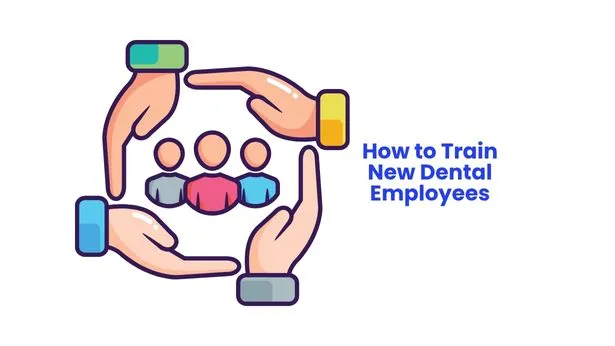
There are unique responsibilities for all dental roles; however, there are universal best practices for training new dental employees:
Break training down into smaller modules.
Incorporate the use of visuals, training videos, and live demonstrations.
Provide time for practice with supervision.
Celebrate progress and milestones.
Additionally, training should never be rushed. Give your new hire the time and tools to be successful.
Final Call Over New Dental Employee Hiring
Developing an effective onboarding process for dental staff isn’t merely about procedure; it’s about getting individuals to feel prepared, empowered, and appreciated starting from day one. Employing actionable dental employee onboarding tips, having a full dental office onboarding checklist, and organizing the new hire process for dental practices can greatly lower turnover and raise your team’s performance.
When you prioritize your onboarding procedure, you’re not just preparing an employee; you’re investing in a future leader of your dental practice.
Ready to Strengthen Your Onboarding Process? Build a team that thrives from the very beginning. Use these strategies and customize them to reflect your practice’s culture. For additional support in finding and onboarding top talent, partner with a trusted Dental Employment Agency. A confident employee means a stronger, more successful dental practice.
FAQs on Dental Employee Onboarding Tips
Q1. What are the top dental employee onboarding secrets?
The top dental employee onboarding secrets begin early, utilize a checklist, have a designated mentor, and provide continuous training.
Q2. How long should dental staff onboarding take?
It generally lasts 30–90 days, with formal learning and routine feedback sessions.
Q3. What goes into a dental office onboarding checklist?
Things such as HR papers, access to systems, safety procedures, role-specific training, and shadowing sessions.
Q4. How do I effectively train new dental staff?
It is quite easy to divide tasks into manageable pieces, incorporate hands-on training, and supply immediate assistance.
Q5. Why is onboarding essential in dental clinics?
It creates employee confidence, increases patient care quality, and slows turnover.
Q6. Should onboarding be different for clinical and admin personnel?
Yes, make the training job-specific with some common foundation-based elements.
Q7. How do I welcome new hires?
Welcome them personally, provide a buddy, and have a friendly, nurturing atmosphere.
Q8. What is a good first-day experience for dental staff?
A tour, team introduction, mission overview, and brief training—accommodated by time to acclimate.
Related Article: How to Navigate the First 90 Days in a New Dental Job


